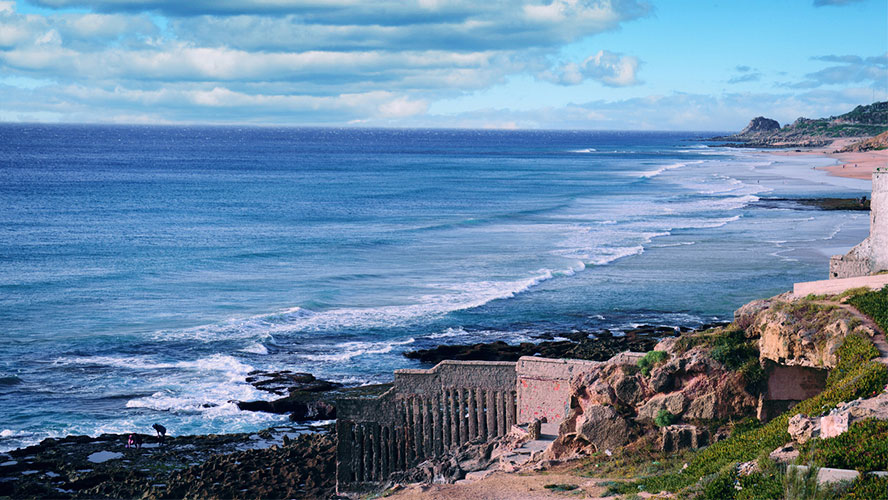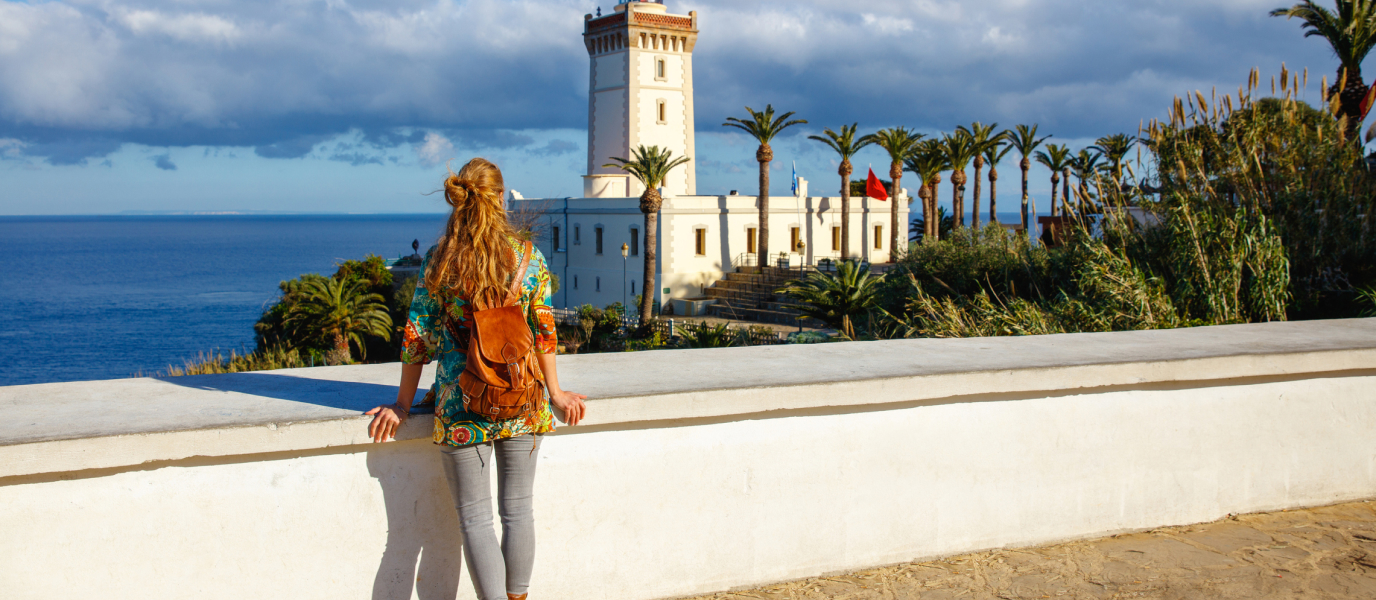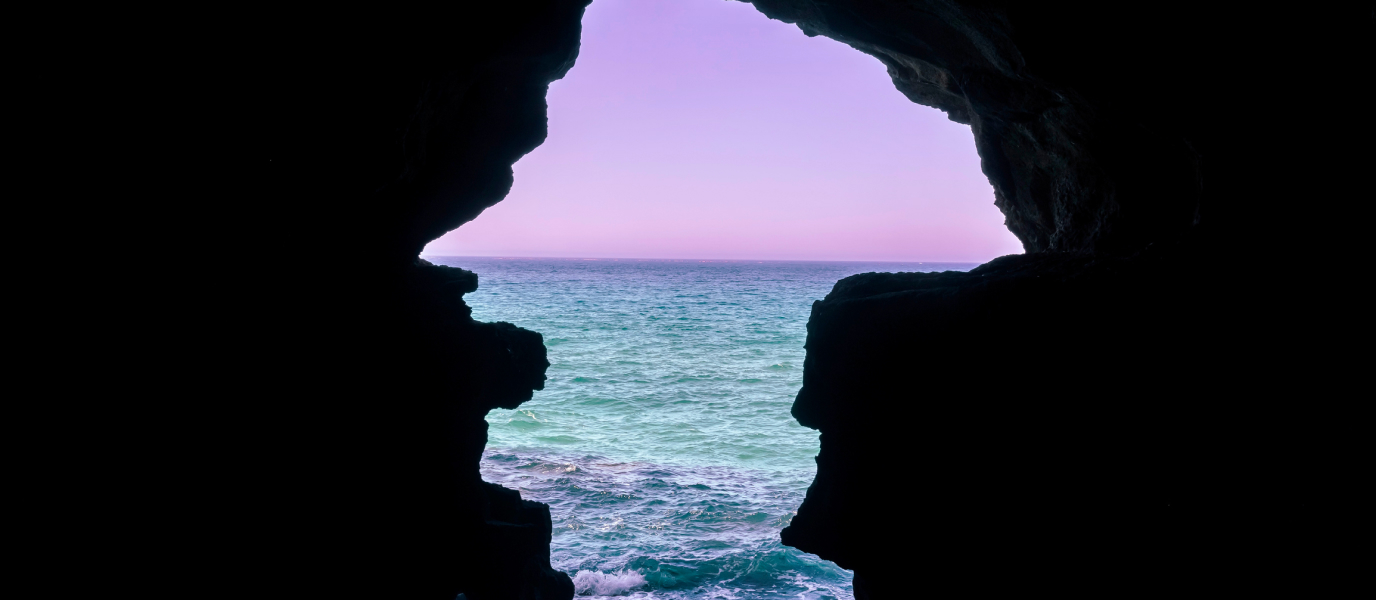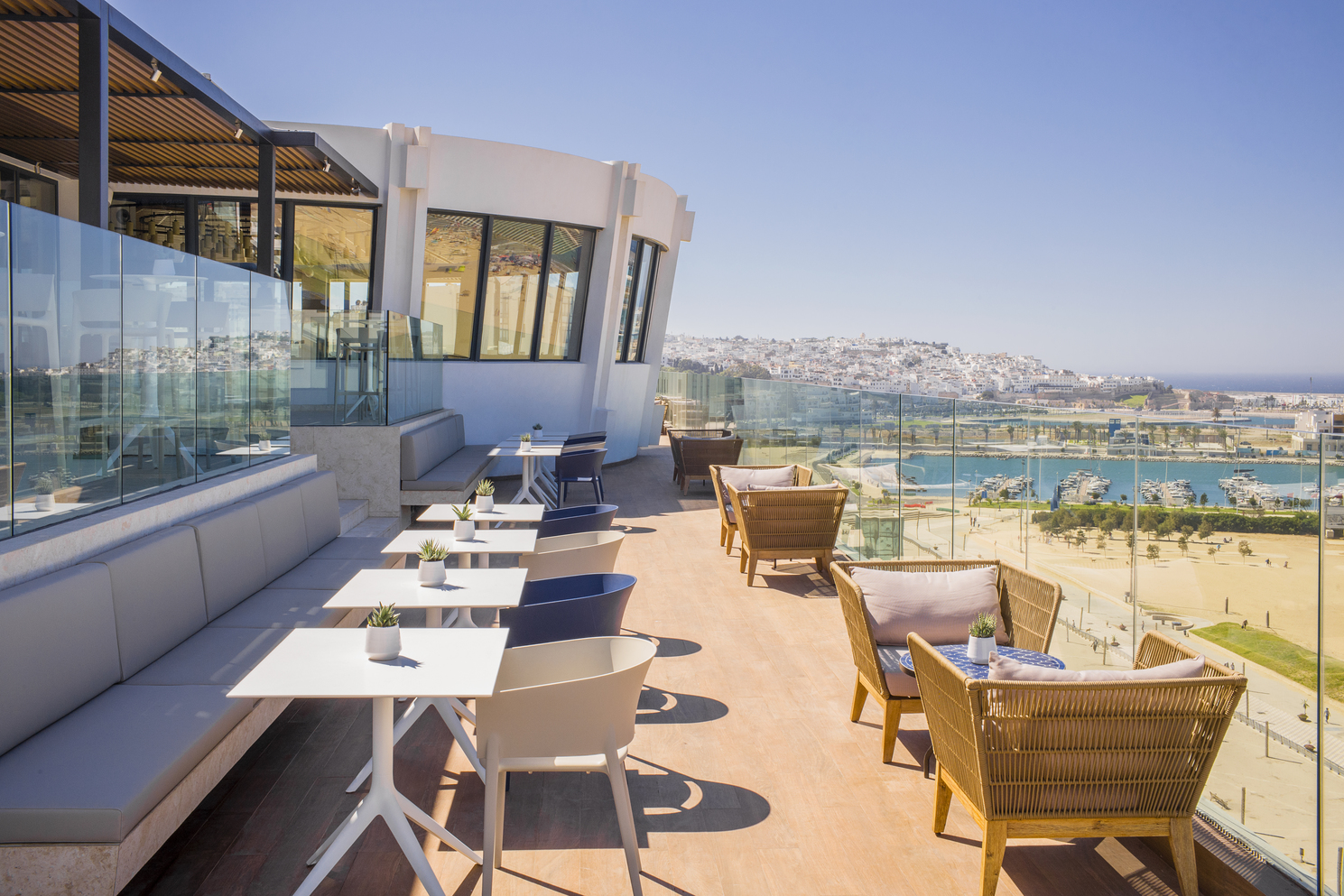Cape Spartel is a must near the city of Tangier. Located in the Cape Spartel nature reserve, a beautiful natural site in northern Morocco overlooking the Strait of Gibraltar, it is the most north western point of Africa. The Battle of Cape Spartel took place here, one of the first confrontations at the start of the Spanish Civil War, in September 1936.
Formerly known as Cape Ampelusia, it provides beautiful views of the deep blue sea where the Mediterranean Sea meets the Atlantic Ocean and of the green and rugged coastline. It is frequented by many tourists who go there to see the spectacular sunsets and have a drink at the beach bars in the area. Apart from its natural appeal, Cape Spartel in Tangier has an iconic lighthouse that was built in the mid-19th century at the top of a promontory of around 300 metres above sea level.
Where is Cape Spartel and how to get there
Cape Spartel is in the far north of Morocco, around 14 kilometres by road from Tangier. The trip does not take more than thirty minutes and you can go by car, taxi or any of the tourist buses from Tangier. Driving along the Atlantic coast road in northern Africa is another must. The access is also good since there is a large car park.
If you prefer to walk, it takes longer depending on each one’s pace. Nevertheless, this could be a good option if you have time.
Cape Spartel Nature Reserve
Cape Spartel is located on the coastal area of Tangier with cliffs, beaches and forests with autochthonous vegetation which form part of the Cape Spartel Nature Reserve. It is one of the land masses which delimit the Strait of Gibraltar on the African side and where an imaginary line is drawn where the Mediterranean and Atlantic waters meet.
Although the area has developments, it is protected and maintains its natural essence. Here, birdwatching enthusiasts can make out the migratory birds seen along the kilometres of coastline: species which fly from Morocco, in the African continent, to Spain, a few miles away, in the European continent.
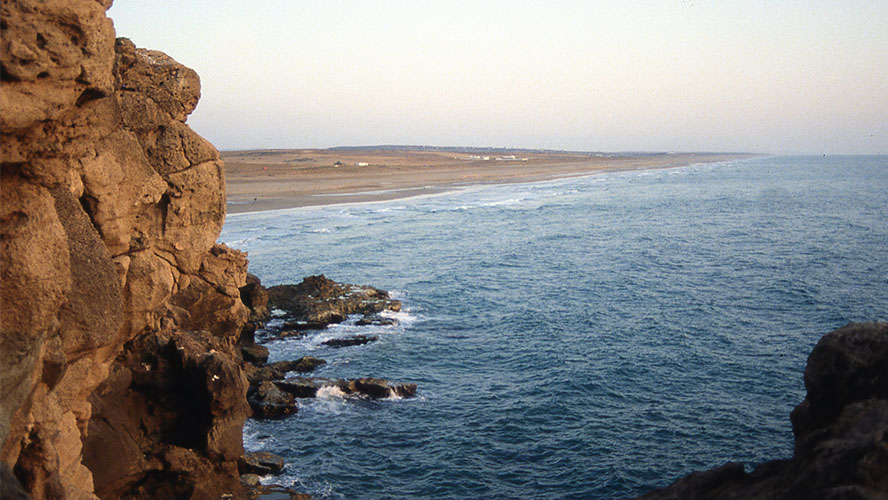
Things to do in the area
The Cape Spartel lighthouse, the Caves of Hercules, long beaches, a rugged coastline hit by the waves and the intense blue of the Mediterranean and the Atlantic are the ingredients which, when mixed, make this natural site of the Cape Spartel nature reserve in Tangier attractive.
Local and foreign tourists tend to frequent this site, especially to enjoy beautiful views and unique sunsets in this part of northern Morocco. The outing should not take more than one morning or afternoon if you want to combine the visit to the lighthouse, walk along the cape and enter the Caves of Hercules.
Cape Spartel lighthouse
It is the symbol of Cape Spartel, the centre of attention and the focal point of the cameras. The lighthouse, which has been in operation since 1864, was the first one of its kind along the Moroccan coastline at the request of the consular representatives of the European countries at the time as a result of the large number of shipwrecks in the area.
With a height of 30 metres, in addition to the 24 metres of the lantern, it has an architectural style with arabesque influences. It still works since its light is visible up to 23 nautical miles which guides the transatlantic ships during the night.
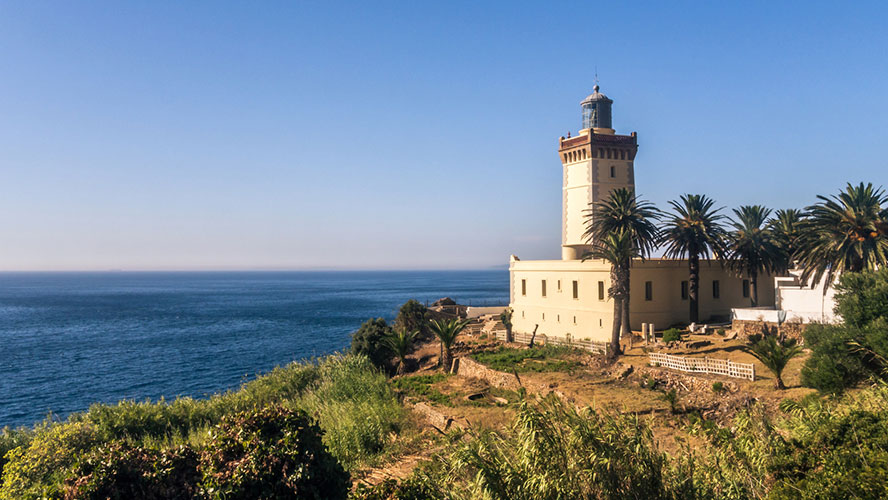
Although you cannot visit it inside, it is worth taking photos and wandering around the area. Near the lighthouse there are cafés where you can have a drink facing the sea, and Europe.
Caves of Hercules
The Caves of Hercules are the other main appeal near Tangier and are just five kilometres by road. The name comes from the collective imagination: according to legend, the Greek hero Hercules slept in the cave before doing his 11th labour, which was to get apples from the Garden of the Hesperides.
Also known as the Grottoes of Hercules, they are excavated in rock due to the wind and sea erosion over time and to human activity since stones have been extracted from its walls for use in constructions. The caves have two exits: one towards the sea and the other inland. From the sea entry (or exit), you can see a shape that is similar to the map of Africa. Inside you will see several waterfalls, maybe a monkey which delights the visitors and perhaps parts altered artificially to make the most of the tourism.
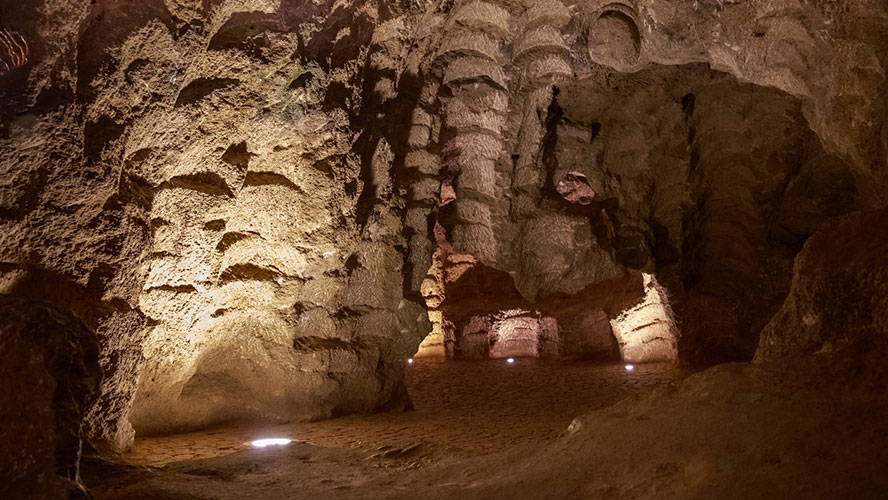
The entry tickets are very affordable.
Beaches near Cape Spartel
The main beaches near Cape Spartel are located along the way from the lighthouse to the Caves of Hercules and towards the south from the grottoes.
Starting with Sol beach, you will find the Ba Kacem and Achakar beaches up to the Grottoes of Hercules. They are all located on coves and with establishments, and they are not full of tourists. Both Sol and Achakar beaches have received the Blue Flag for the quality of their services.
From the caves onwards, Sidi Kacen (Ba Kacem) beach stands out. It has over 20 kilometres of fine white sand and you can access it by road.
